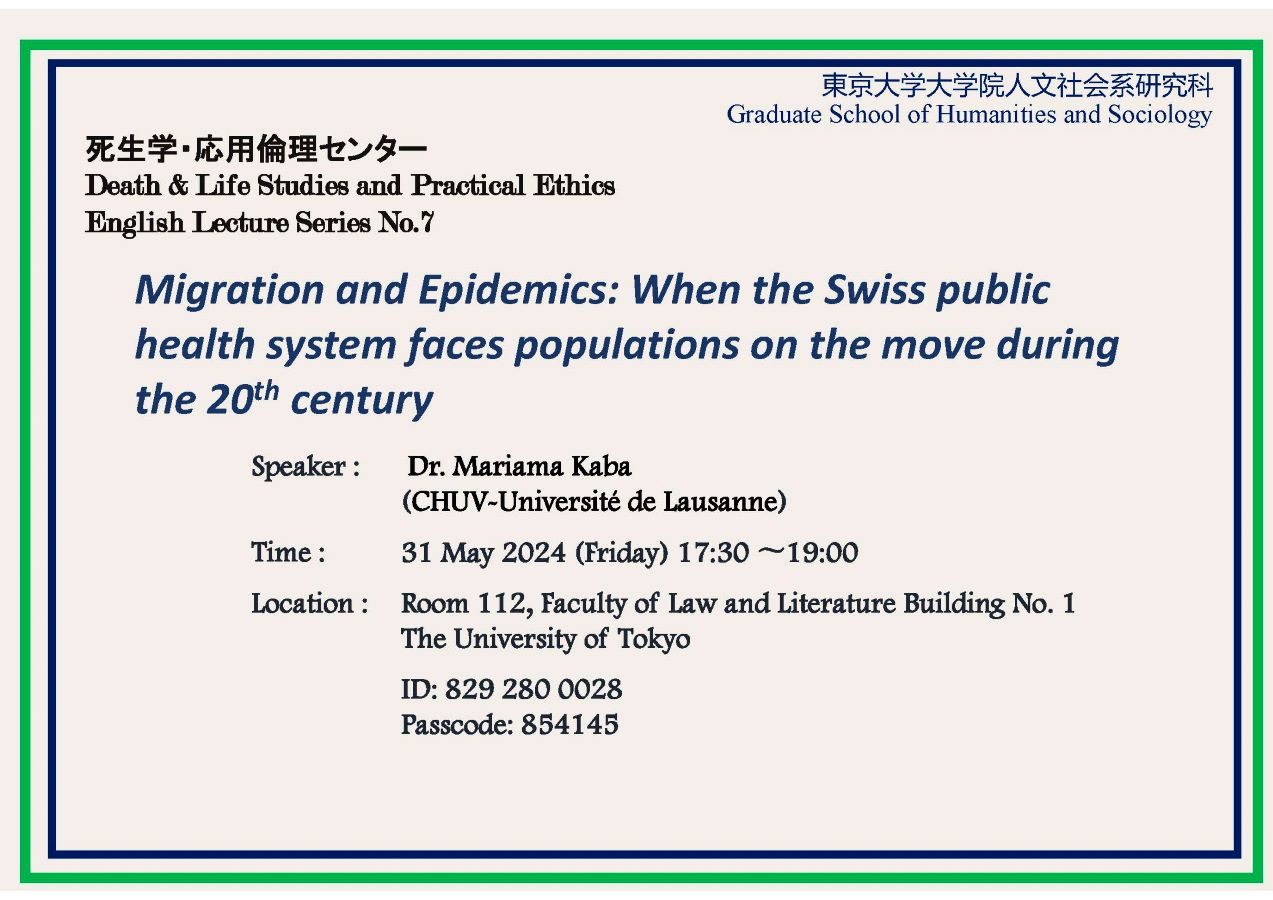Death & Life Studies and Practical Ethics Lecture Series
Number 007
Dr. Mariama Kaba, "Migration and Epidemics: When the Swiss public health system faces populations on the move during the 20th century
【日時】2024年5月31日(金)17:30-19:00
【会場】 東京大学本郷キャンパス 文学部法文1号112教室
【オンライン会場】Zoom ID: 829 280 0028
【参加について】参加無料・事前予約不要
【使用言語】英語(通訳なし)
【主催】東京大学大学院人文社会系研究科 死生学応用倫理研究室
【共催】東京大学大学院人文社会系研究科
【助成】布施学術基金
※この講演会は布施学術基金により助成を受けています。
Speaker: Dr. Mariama Kaba (Head of Research, Institute of Humanities in Medicine, CHUV-University of Lausanne)
For a long time, Switzerland felt spared from the major epidemics affecting surrounding countries, which were more closely integrated into the epidemic circulation networks through their direct contact with the sea, the colonies, etc. Switzerland was also a country of emigration rather than immigration until the end of the 19th century, so that it was not confronted with large population movements likely to pose health problems similar to other nations. Thus, the Swiss authorities were primarily concerned with the hygiene of their people, developing health education for the Swiss inhabitants and dealing with isolated epidemic outbreaks through local regulations and laws. However, at the beginning of the 20th century, due to many factors such as increasing population movements, several waves of epidemics occurred throughout the entire country. The Swiss government and regional health authorities were put to the test.
In my talk, I will first recall the main ancient theories on epidemics and their causes, and the biomedical discoveries of the 19th century that had a major impact on the public health measures in the following century. I will then present how the Swiss public health system managed epidemics related to migration situations during three periods of the 20th century: the so-called Russian Cholera around 1900, the Spanish flu during World War I, and tuberculosis among migrant workers after World War II.
The correlation between the medical viewpoint and administrative decisions suggests that the measures taken by the authorities against epidemics are defined in a pragmatic way in relation to the precedent health crises. Many measures, which took shape in the wake of previous epidemic outbreaks, perpetuated and continued to evolve in line with scientific knowledge and new technologies. But epidemics are also accompanied by social and economic disorganization, popular beliefs, and misinformation, that are the source of fears and stigmatization of considered at-risk social groups – such as populations on the move or migrants. All these elements come into play in the epidemics management of health decision-makers.


